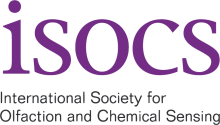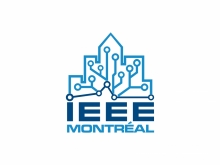1) Autonomous Sensing with Mobile Robots
Organizer: Achim J. Lilienthal, Örebro University, Sweden (achim.lilienthal@oru.se)
Autonomous sensing is of increasing importance for dedicated inspection, which often has to be carried out in dangerous environments; as well as for monitoring and surveillance tasks, which are typically a dull, routine work. The increasing importance corresponds to progress in research on e.g. chemical sensing, wearable sensors, ambient assisted living, compressed sensing, and robotics.
This special session will bring together researchers with an interest in autonomous sensing, involving sensing modalities relevant to the ISOEN community. Topics include but are not limited to:
- sensor construction and mobile platforms for environmental monitoring,
- data gathering and signal processing in autonomous sensor networks,
- estimation of spatio-temporal fields (gas, wind, radiation, etc.),
- collective sensing strategies,
- active sensing,
- chemical discrimination in turbulent regimes,
- plume tracking,
- sensor planning,
- surveillance, monitoring and inspection with aerial, ground and underwater robots,
- novel applications of autonomous sensing
2) Calibration Algorithms for Distributed Chemical Sensing
Organizer: Saverio De Vito, ENEA, Italy (saverio.devito@enea.it)
An increasing number of applications will rely on the deployment of smart cyber chemical systems implementing distributed chemical sensing. As the wearable systems horizon rapidly evolves, novel algorithms are needed at several layers of the potentially rich semantic extraction chain. Improving accuracy, reliability, scalability and data fusion capabilities is now essential to achieve field operativity for air quality monitoring at pervasive scales, olfactive nuisance monitoring, personal exposure monitoring, Industrial safety, Infrastructure monitoring and Security applications.
This session will focus on original and recent advances in the following areas:
- Calibration algorithms for local (on board), cloud or fog computing based chemical sensors fingerprint classification or regression (e.g. concentration estimation, personal exposure quantification, pollution identification)
- Multi-node sensor fusion and data assimilation schemes for spatial and/or model based integration of chemical sensor nodes data (e.g. air/water pollution mapping)
- Olfactive nuisance source identification, evaluation and localization
- Algorithms for cooperative cross calibration, calibration transfer and drift counteraction (e.g. rendezvous or network based re-calibration, adaptive drift counteraction)
3) Sensors and Diagnostic Devices for Breath Analysis
Organizer: Perena Gouma, University of Texas at Arlington, USA (pelagia.gouma@uta.edu)
This special session aims to attract contributions to the field of sensors for non-invasive diagnostics. These include the detection and the accurate measurement of the concentration of gaseous biomarkers that are found in exhaled breath or are emitted from skin and sweat, and which signal disease or metabolic malfunctions. The development of devices that facilitate biomarker detection, such as breathalyzers and wearable sensor technologies, is also included in the scope of the session. Current efforts to commercialize these sensors and devices for personalized medical diagnostics may also be presented here.
Key topics include:
- Detection of disease biomarkers
- Breath biomarkers, breath sensors, breathalyzers
- Skin biomarkers, skin/sweat sensing
- Wearable detectors
- Design of sensor systems and sensor arrays
- Personalized diagnostics
- Metabolic rate monitors
- Human and animal health monitors
To submit to one of the above Sessions, select "SPECIAL SESSIONS" as your Track and the Session # as your Topic.



